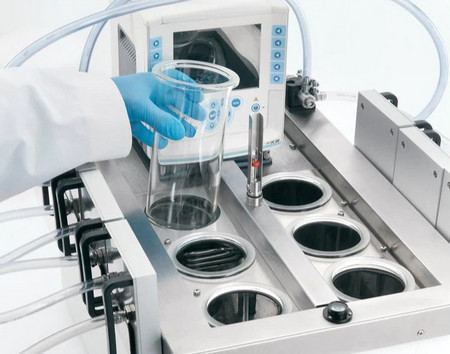
NewsInformation Center
What is colour fastness to laundering test and how to test it?
2023/03/17
The colour fastness to laundering test is a method of testing the colour stability of textiles or other materials. It is carried out by simulating the washing process and measuring whether the colour of the material under test will fade or fade.
In the wash fastness test, standard detergents and machines are generally used to simulate the process of domestic or industrial washing. The material under test is placed in the machine together with the cotton fabric on which the test is based and washed according to the standard washing conditions. After washing, the material is exposed to sunlight or artificial light and its colour is assessed using a colour measuring instrument or the naked eye to determine its colour fastness rating.

Generally, wash fastness tests are evaluated according to international standards such as ISO, AATCC and ASTM. In practice, wash fastness testing can be used on textiles, clothing, home textiles, footwear and other materials used in outdoor and indoor environments to ensure their colour stability.
How do you test for colour fastness to washing?
Sample preparation: In order to carry out the wash fastness test, a sample of the appropriate material needs to be prepared. Ensure that the sample meets the test criteria and that the sample is large enough to reflect the wash resistance in actual use.
Detergent selection: Select a detergent and its concentration in accordance with the standard and carry out the test according to the specified conditions.
Washing procedure: Before carrying out the test, the washing procedure needs to be determined, including the detergent and other washing conditions that have been identified.

Washing equipment: Select washing machine equipment that meets the test criteria and ensure that conditions such as water temperature, washing time, rinsing and centrifugation are as specified.
Washing process: Tests are carried out in the washing machine, keeping the temperature and time to standard and using auxiliary instruments such as chemical principle test solutions if necessary.
Analysis of results: Complete all washing procedures and check samples for colour change or discolouration. Analyse and evaluate using a colourimeter or other measuring instrument and compare the results for compliance with the standard.
In summary, conducting a wash fastness test involves following standard test procedures, including the selection of the appropriate material, detergent and wash procedure. The test is essentially a test of the actual service life and performance of the sample by subjecting it to actual conditions of use.
Previous: 10 Tips for Choosing the Right Colour Fastness Tester
N e x t : Flash: Indian cotton prices expected to see a fall in 2023



